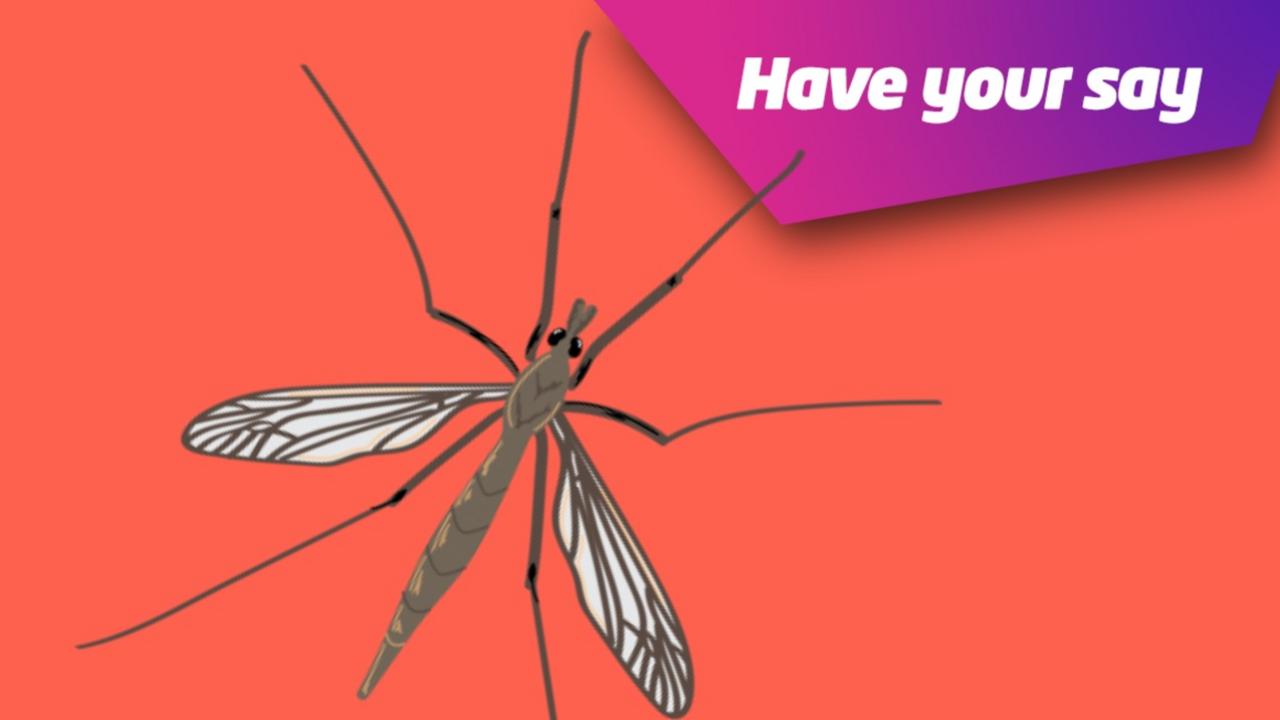Spider-hunting wasp caught on camera paralysing its prey in Scotland
- Published
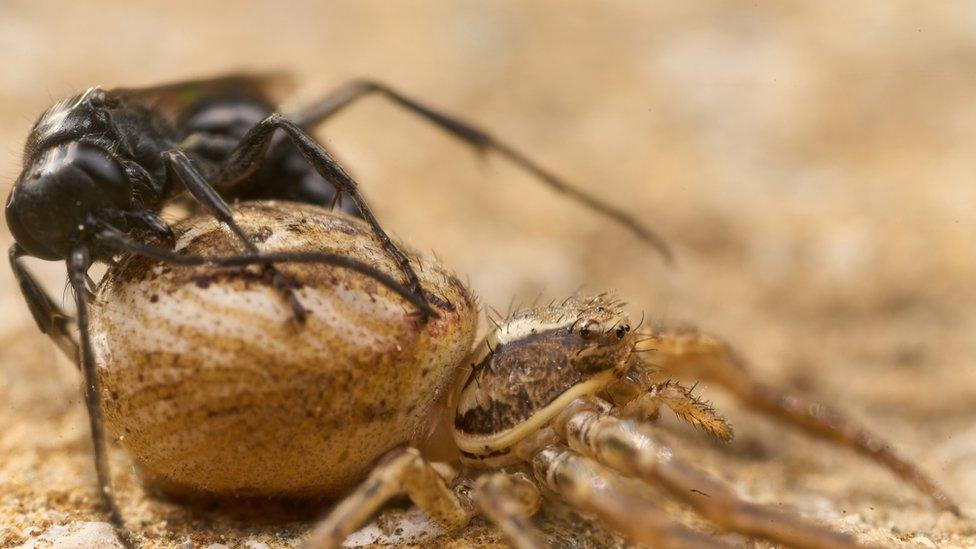
Colin photographed the wasp attacking the crab spider in his garden
A macro photographer has captured the moment a spider-hunting wasp paralysed its prey.
Colin Edwards saw the wasp - which is rarely seen in Scotland - hunting a crab spider in his garden in Charlston, Fife.
The wasp, called Dipogon variegatus, then dragged the spider it into a hole to lay an egg inside it.
Mr Edwards said he believed this was likely to be the only time he would ever witness it happening.
The 59-year-old is the national environment manager with Forestry and Land Scotland.
He has been taking really close-up, detailed images of very small creatures for more than 10 years.
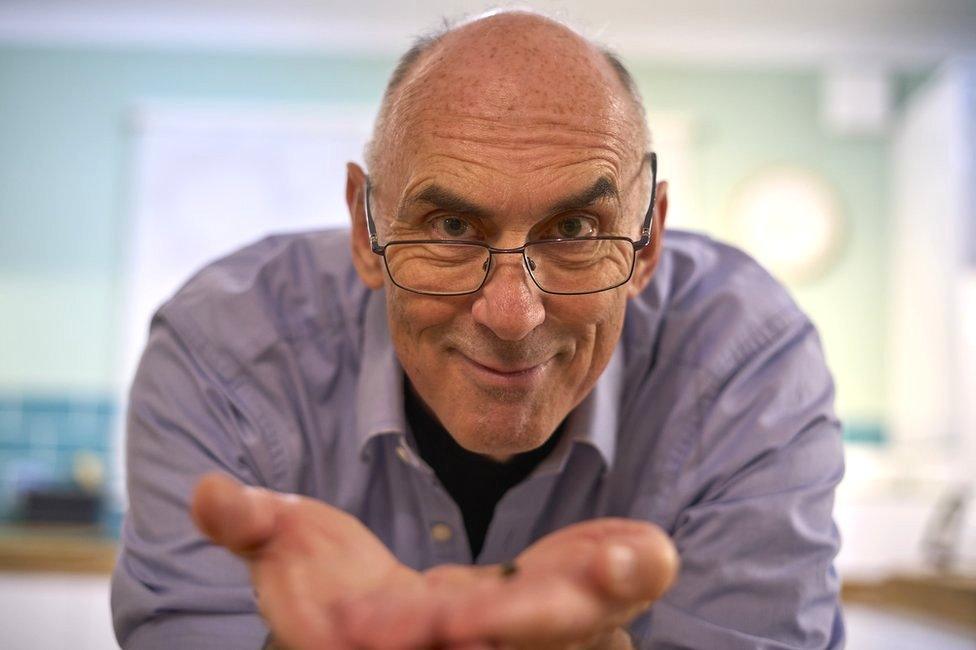
Colin Edwards with a specimen of Dipogon variegatus
The Dipogon variegatus wasp, which is solitary and does not live in a hive like the common wasp, only lays its eggs in live crab spiders - which are also rare in Scotland.
Mr Edwards said it was the first confirmed sighting of a spider-hunting wasp in Fife. It follows two unconfirmed sightings 15 years ago.
He told BBC Scotland he sits every day in his garden at his restored steading, with his high resolution camera.
"I specialise in behavioural activity. I've seen pictures of dead specimens of this wasp but never of it in action.
"So I'm absolutely thrilled to have captured this process going on in the natural world - and to think it was in my garden is just so exciting."
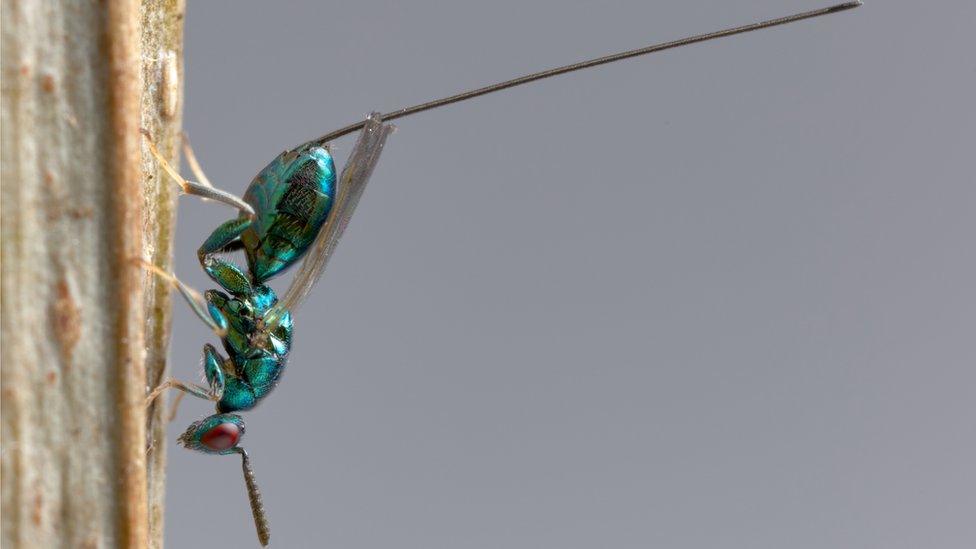
Torymus Erucarum wasp with long ovipositor taken in March
He took the picture in June. He then had to wait for it to be verified by Bees Wasps Ants Recording Society as well as the National Museums for Scotland Collection Centre for verification.
"I have been back to that spot many times and despite specifically looking I've never seen this happen again.
"It could be a one-off, never to be repeated.
"When I saw it on the path I couldn't believe it. I rushed to investigate with my camera, I was flat on my belly, nose to the ground.
"It then paralysed the spider so it couldn't escape before dragging it up the stone wall of my house and into a hole. The whole process took about 15 minutes."
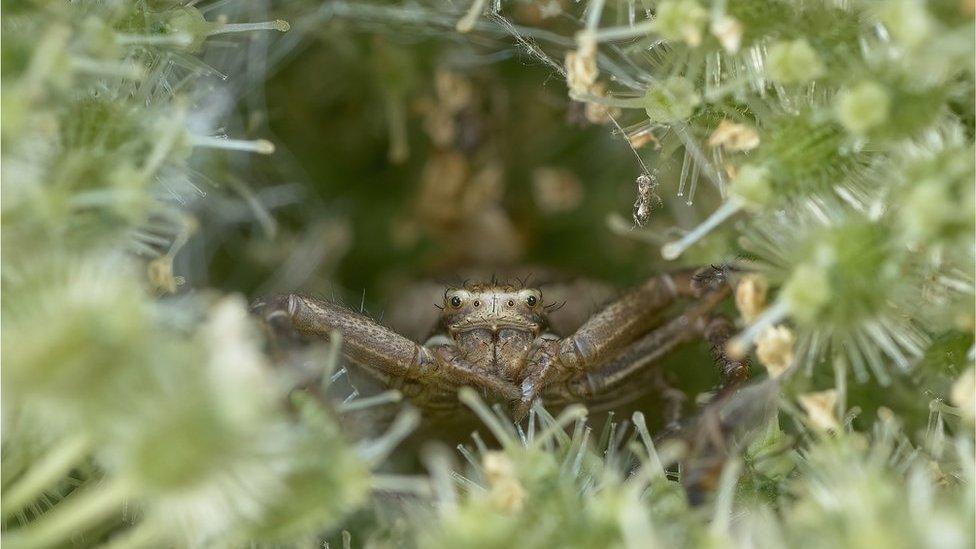
A crab spider waiting for pray with its legs open
The wasp lays an egg inside the spider using an ovipositor - a spike from its tail which is often mistaken as a sting.
The larvae then takes about three weeks to hatch before feeding off the spider.
Dipogon variegatus, which is not native to Scotland, only lays its eggs in crab spiders.
The crab spider is an ambush predator. It sits on a flower with its front legs open then sinks its fangs into its prey - injecting poison before digesting it.
Mr Edwards said: "People don't pay as much attention to insect species as they do to bigger, more enigmatic creatures like red squirrels or pine martens.
"Wasps are often overlooked, despite how important they are. They keep pesky insect populations like aphids, caterpillars and flies under control, which benefits gardeners and farmers."
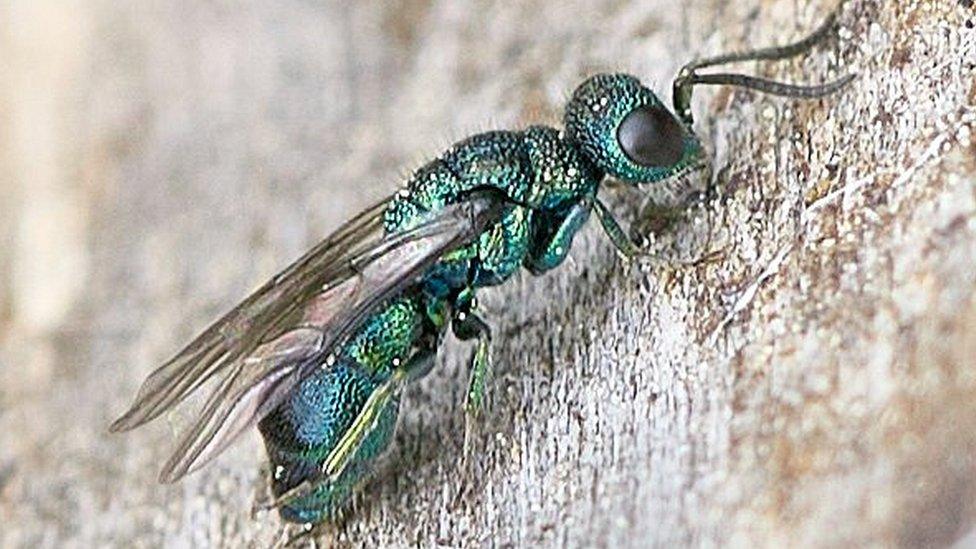
In June, Colin found Scotland's second record of the ruby-tailed wasp, Trichrysis cyanea, the only entirely metallic blue wasp in Britain
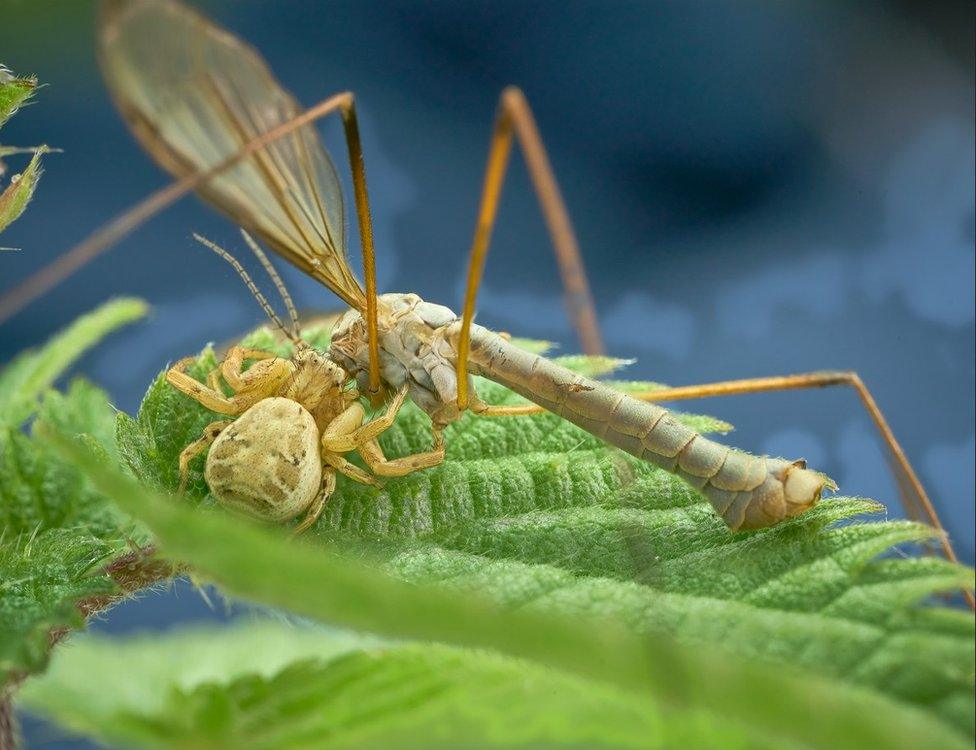
Colin photographed a crab spider catching a crane fly - also know as a daddy longlegs - in Devilla Forest, Fife, in September
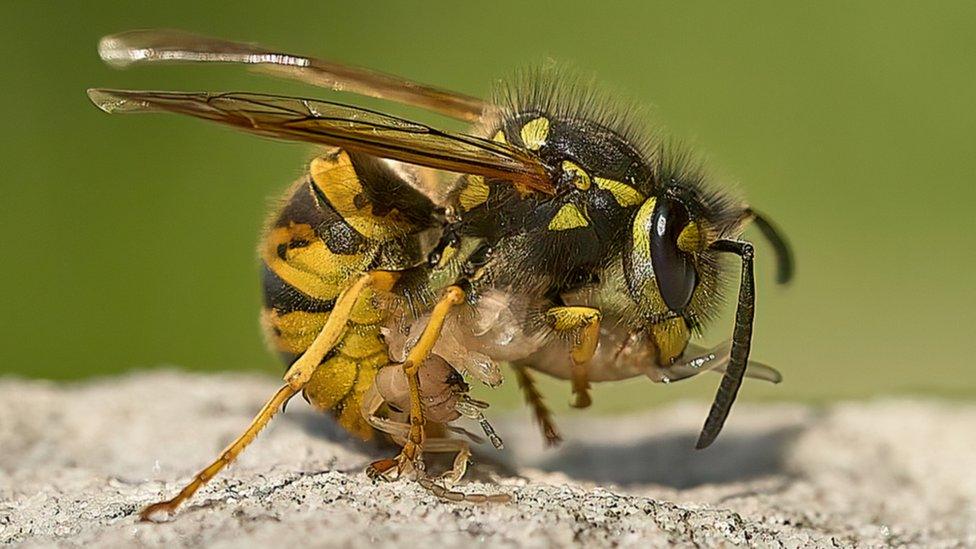
A common wasp cutting off appendages of an earwig larvae to make it more aerodynamic
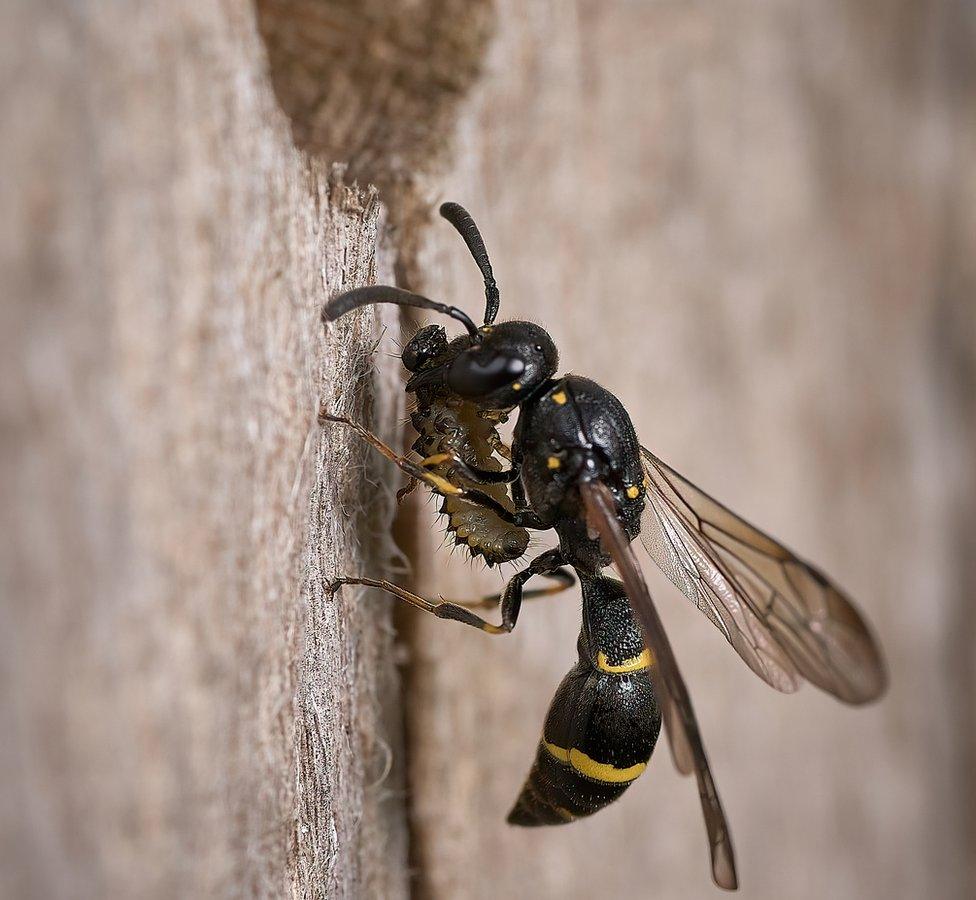
Symmorphus bifasciatus with a beetle larvae
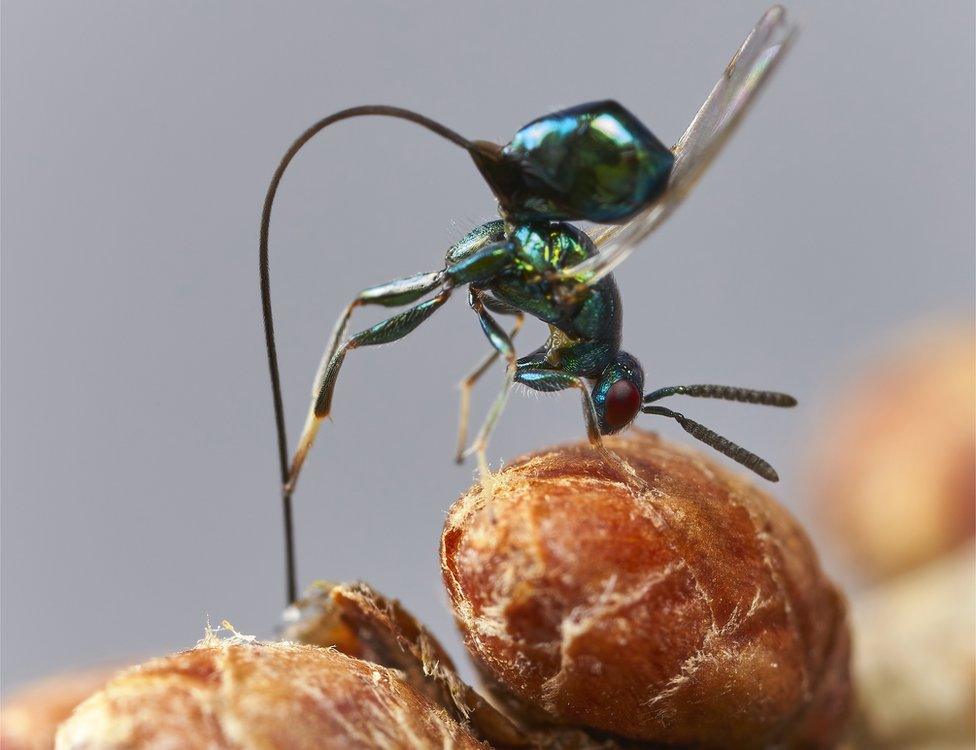
In March, Colin captured a Torymus Erucarum wasp injecting an egg inside a lump - known as a gall - on an oak tree
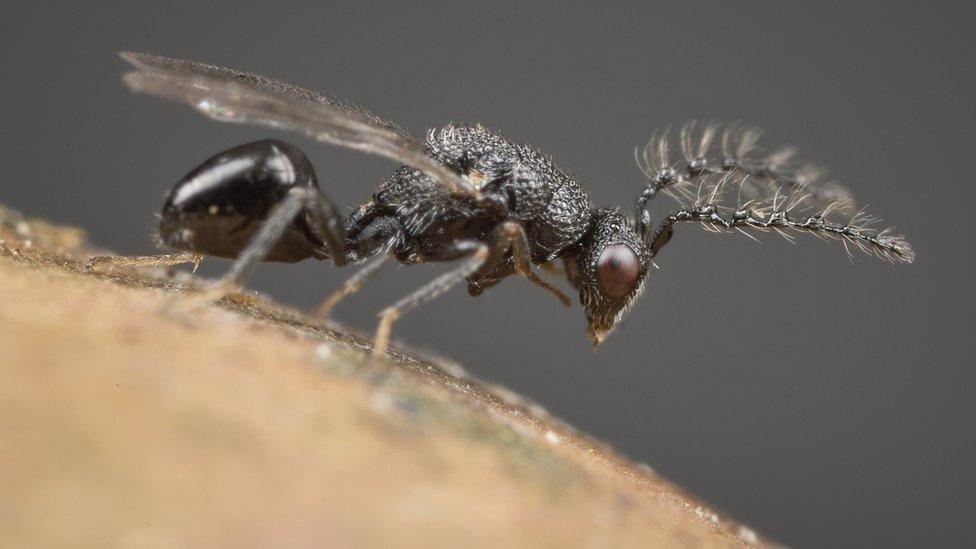
Another wasp, an Euritoma Brunniventri, injects an egg into the larvae inside the tree gall created by the Torymus Erucarum
All images by Colin Edwards.
- Published12 September 2023
